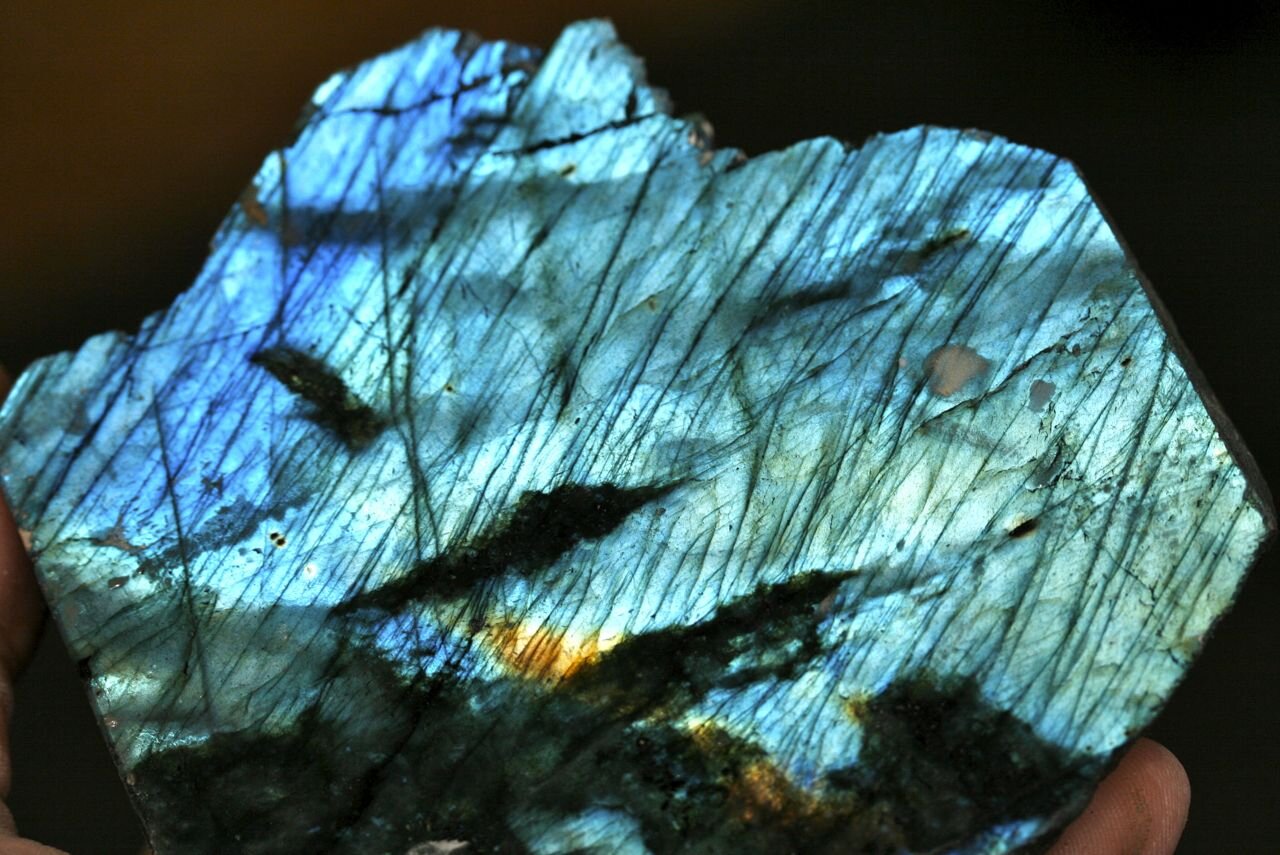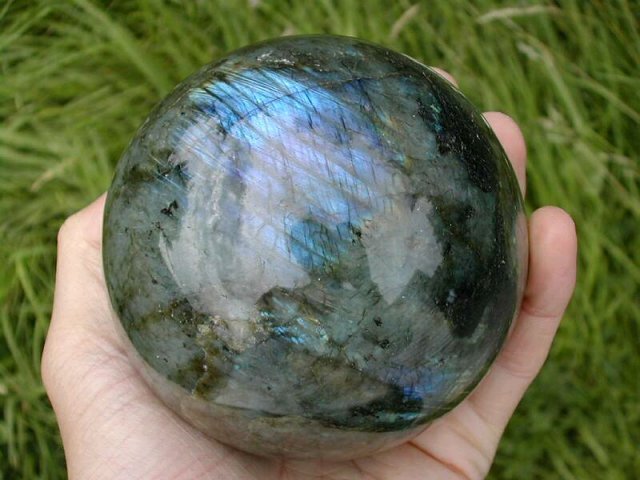
Labradorite
Labradorite crystal gets its name from the town of Labrador, Canada, where the stone was discovered.
Labradorite is typically a greyish-green or blue stone, but can also be white or even colourless. Labradorite’s most renowned quality is known as labradorescence, where at the right angle, can reflect neon illuminations in lights.
FUN FACT
Labradorite can look like a complete normal stone if it does not catch light at certain to reflect its “labradorescence” quality. The neon illumination in light can appear from a range of speckles of light all over the place or appear in large area.
When light shines through these thin layers it results in a brilliant display of light in iridescence colour known as the “Schiller effect”. The most common colours are blue, green and cold, but could also appear in pink, purple and a rainbow of colours.
Moonstone, Sunstone and Amazonite have very similar chemical compositions and are also types of feldspars (mineral family).

Geography Locations
While Labradorite was first discovered in Canada, pockets of deposits can be found in Finland, Russia, Australia, Mexico, US, Madagascar, Brazil, India, Norway, and Sri Lanka.
Labradorites are typically mined from the primary deposits still having their original relationship with the host rock.
Amazing Properties
Discover
Labradorite is a great stone for meditation. It is said it has the power to open your mind to new experiences, to cut through all the illusions and see the truth. It is a stone that can awake our natural gifts, discover our hidden talents and new possibilities.
Clearance
Labradorite can open up blockage and help bringing in insight that is otherwise clouded by emotions especially when it comes to making decisions. It also help open up for communication and therefore make your life runs smoother.
Transforming
Labradorite is also known as a transformation stone. Since it carries emotionally positive energy, it brings enthusiasm to every day life and make your environment feels welcome and improve many aspects in life. They are small changes, but rivers do come together and form oceans.

History
Labradorite is relatively a new stone in the metaphysics community and in historic use. Before it was “discovered” by a Moravian missionary on the Isle of Paul in Labrador, Labradorite was known as the fire stone (or fire rock) by the native Inuit people of Canada and was the subject of some legends and customs. According to the native Canadian tribal lore, Labradorite is said to contain the Northern Lights, known as the Aurora Borealis. In the myth, it is believed that the lights were “set free” by one of their ancestors who broke through the rocks with his spear. The lights that remained were set into stone, and thus Labradorite was born. It wasn’t until 1770 then it was officially identified as Labradorite.
The same stone but discovered in Finland is called Spectrolite (a specific trade name for its geographic location). It was discovered in 1940 in Ylämaa in southeastern Finland by accident when soldiers were making obstacles for invading Russian tanks. While blowing up rocks with dynamite they discover this brightly coloured version of Labradorite.
There has been some antique jewellery made with Labradorite from the Victorian era still circulating in the antique trading market, but there is not much other older artefacts we have discovered from other historic time. Due to its original location, we suspected that for a long time, Labradorite has been found and used only by the native Inuit people of Canada pre-18th century.
Gemology
Labradorite is a Plagioclase Feldspar, a sub-group of Silicate minerals that are rich in Calcium. Silicates are minerals which contain the elements of Silicon and Oxygen, and is one of the most abundance mineral elements on earth. It exists more than 25% of all known minerals and 40% of all common minerals. In addition being a major part of the Earth’s crust, silicate minerals have also been found on the moon and in meteorites.
It grows in crystalline masses that can range in size from microscopic to over a yard or more in length. On rare occasions, it grows tabular crystals.
Labradorite is formed in mafic igneous rocks such as Basalt and Gabbo. Labradorite is characterised by multiple layers of Feldspar that grow on top of one another. It has a hardness of 6-6.5 which makes a great stone for jewellery.












Shop Labradorite
ATALANTA Arcadia - Labradorite Earrings in 14K GF
Unique and beautiful Labradorite that native Canadians dubbed it as the “Aurora Stone” made into this classic 14K gold-filled earrings that’s full of elegance and stature.



